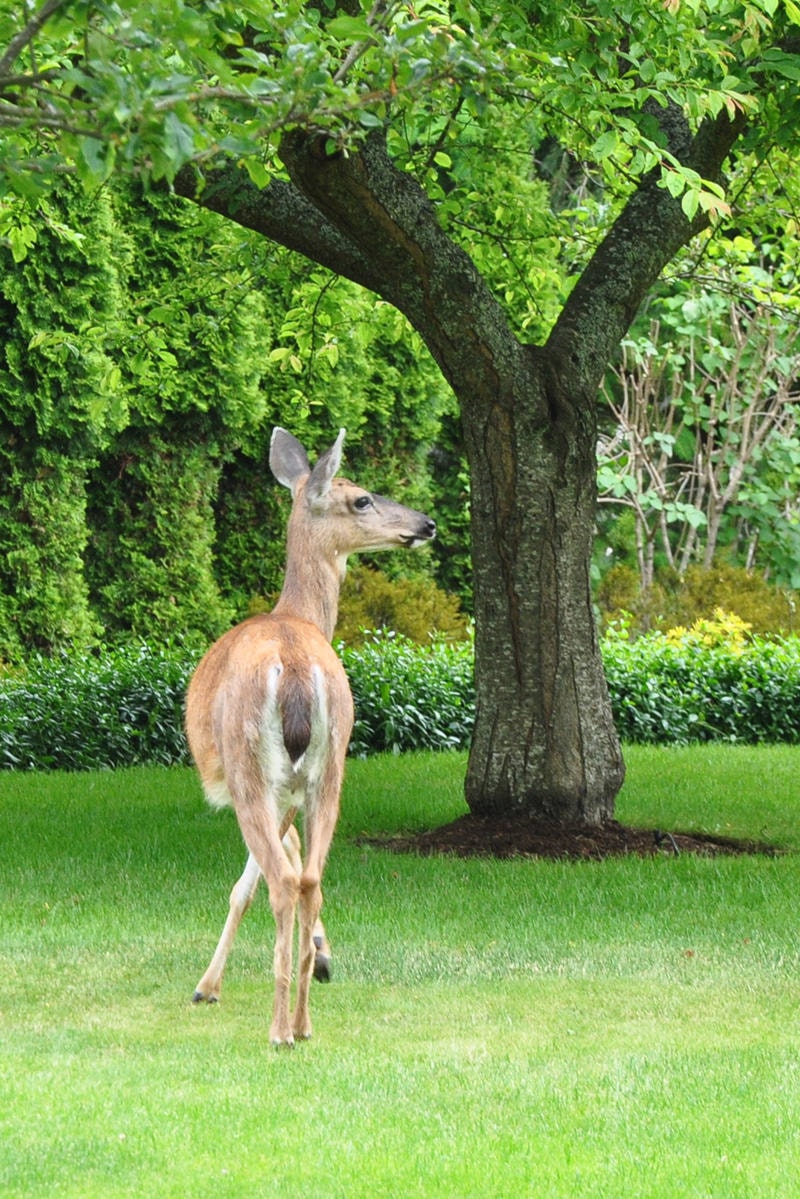As students head back to school and drivers grapple with darker, rainier days – and nights – it’s essential to take that extra care to watch for urban deer.
Because deer tend to be more active at dawn and dusk, they tend to be by the roadside at exactly the time of day that it’s most difficult to see them, notes the Urban Wildlife Stewardship Society’s Kristy Kilpatrick.
And this time of year, it’s also when we’re on the road more often.
Here’s how to better share our roads with our four-legged urban friends:
- Slow down: in areas deer are known to frequent, and keep your eyes on high alert, especially at night.
- See one? Expect more: If you see one deer, slow down; they’re rarely alone, and others may follow behind or dart out at the last minute. Remember that headlights will confuse deer and may cause them to freeze or act unpredictably.
- Watch for fawns: Young deer may not recognize vehicles as a threat, so may not immediately move out of the way. When they do, their hooves can slip on slick pavement and fall in front of your vehicle when attempting to jump away.
- If a collision seems imminent: Remove your foot from the accelerator and brake lightly while maintaining a firm hold on the steering wheel while keeping the vehicle straight. Do not swerve in an attempt to miss the deer. Insurance adjusters say more car damage and personal injury is caused when drivers swerve to avoid collision with wildlife.
- Want an awareness sign? You’ve likely seen signs in the neighbourhood cautioning drivers to slow down and watch for deer and fawns. Esquimalt residents can pick up a sign from municipal hall; others wanting a sign for their property can email info@uwss.ca – there’s no cost for the signs but a minimum $5 donation is appreciated.
Rutting season is on the way
While fawning season is waning, fall rutting season is on the horizon. During this time, bucks can become more visible and their behaviour can be erratic, so it’s best to give them a wide berth to avoid conflicts.
Support deer management: Enter your best photos today!
Do you have some amazing photos of Esquimalt and Victoria? Send them along to the UWSS Photo Contest and be eligible to win a spot in the Urban Wildlife Stewardship Society 2020 calendar! The contest features three categories – Wildlife, Natural Landscapes and Gardens – with the entry deadline 11:59 p.m. Sept. 27. Guest judges include photographers Frank Townsley, Sam Rose Phillips, James Thompson and Jess Findlay, and prizes include a two-night stay at the Oak Bay Beach Hotel, a gallery wrapped canvas from James Thompson’s Wolf Collection, and two beautiful coffee table books, British Columbia – Graced by Nature’s Palette by Frank Townsley and Birds of British Columbia by Glenn Bartley, and more!
For more information about deer behaviour or local research efforts, visit uwss.ca. Learn more about Esquimalt’s deer management initiatives at esquimalt.ca.
